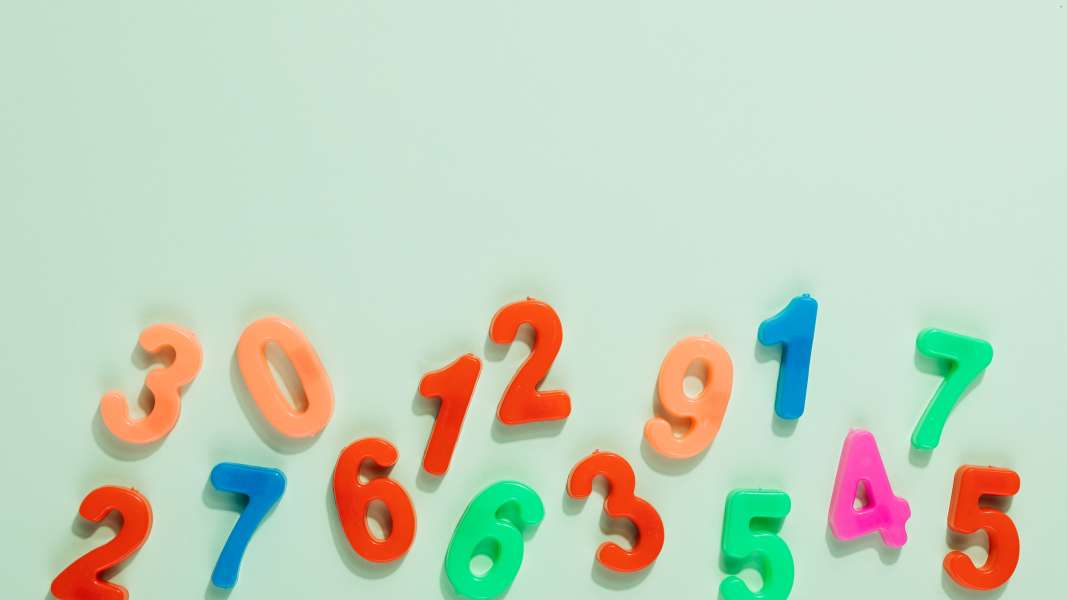What is a numerical reasoning test?
Numerical reasoning tests are often used as pre-employment screening assessments to gauge the proficiency of candidates in being able to apply basic maths to solve problems.
The questions in the numerical reasoning assessment are quite often presented with data in tables or graphs, and there are sometimes word problems that need to be solved.
The content of these tests is based on the maths you would have learned at school, including basic multiplication, addition, division, and subtraction. You will also be expected to be comfortable using other operations such as percentages, ratios, and averages.
In this article, we will look at the basic formulas you will need to know and be comfortable using to get the best score in your numerical reasoning test.
Averages
Averages in numerical reasoning tests usually refer to what we know as the mean.
This has a very simple formula:
Sum of the numbers divided by the number of numbers.
To find the average from a group of figures, add them together and divide by how many there are.
Example: The following scores were gained in a test of children's ability, what is the average score? 23, 24, 24, 22, 20.
Adding together the scores gives us a total of 113, which when divided by 5 (the number of children who took the test), we get an answer of 22.6. So the average score for these children is 22.6.
Not all averages are created equal, and there may be questions relating to weighted averages in the assessment. This means there might be variables within the data that need to be accounted for.
Example: Another group of children took the same test, and the average score of these ten children was 24.5. What is the average score of both groups of children?
To work this one out, we need to multiply the data before dividing it by the number of children.
The first group comprised 5 children with an average of 22.5, while the second group had 10 children scoring 24.5, with a total of 15 children taking part. The equation would look like this:
(5 x 22.5) + (10 x 24.5) / 15
112.5 + 245 = 357.50 / 15 = 23.8
The average of all 15 children that took the test is 23.8.
Percentages
Percentages are used to describe numbers as parts per hundred (translated from Latin per cent) and are used a lot in business - so they are a prominent part of a numerical reasoning test.
Using percentages means increasing and decreasing by a percentage, find the percentage change, and demonstrating the proportion of something to something else.
Basic Percentages
The basic formula for finding the percentage of something looks like this:
Value / Total x 100.
Example: In a basket of 100 different fruits, there are 45 apples. What percentage of the fruit basket are apples?
45 / 100 = 0.45.
0.45 x 100 = 45%
This can also be used to find out how much of the basket is not apples:
100 - 45 = 55
55 / 100 = 0.55
0.55 x 100 = 55%
Find the Percentage Change
A popular question in the numerical reasoning assessment is for the candidate to find how much of an increase or decrease there is between two numbers.
For an increase, the formula is:
New number - original number/original number x 100.
For a decrease, you would use:
Original number - new number/original number x 100
Example: A class at school used to have 26 students, and now they have 32. By what percentage has the class grown?
32 - 26 = 6
6/26 = 0.231
0.231 x 100 = 23.1
The class size has increased by 23.1%
Example: A class at school used to have 32 children, and it now has 26. By what percentage has the class size decreased?
26 - 32 = -6
-6 / 32 = -0.188
-0.188 x 100 = -18.8
The class size has decreased by 18.8%
Percentage Change (Figures)
You might be asked to find the new total when a figure increases or decreases by a percentage. This is another relatively simple formula that you need to remember, but you do have to convert it to a decimal before you can use it.
To convert a percentage to a decimal, just divide it by 100, so 75% would become 0.75.
The formula for finding the new total after a percentage increase is:
(1 + increase) x original amount = new total.
Example: There were 200 people in a room. Their number has increased by 75%. How many people are there in the room now?
1 + 0.75 = 1.75
1.75 x 200 = 350
There are now 350 people in the room.
The formula for finding the new total after a percentage decrease is:
(1 - increase) x original amount = new total.
Example: There were 200 people in the room, but 75% of them have now left. How many people remain in the room?
1 - 0.75 = 0.25
0.25 * 200 = 50
There are 50 people left in the room.
Reverse Percentages
You would need to use a reverse percentage formula to find the original value of something after a percentage increase or decrease. Again, when working with a percentage you would need to change it to decimal for the formula to work correctly.
To find the original value after a percentage increase, the formula would be:
New value / 1 + increase.
Example: The local coffee shop has increased their prices by 25%, and now a coffee costs £3.00. What did it cost before the increase?
25% = 0.25
£3.00 / 1 + 0.25 = £2.40
The coffee was £2.40 before the price increase.
The formula for finding the original value after a percentage decrease is:
New value / 1 - decrease.
Example: A shop is running a 25% off promotion, and you have bought a book that now costs £4.50. How much was it before the promotion?
£4.50 / 1 - 0.25 = £6.00
The book originally cost £6.
Ratios
Ratios are used to compare the number of one thing to the number of another thing. To work out how much of something there is in one-half of the ratio, you need to know the total amount. It is depicted as two numbers separated by a colon, like this: 1:2.
The formula for X:Y would look like this:
X / X + Y x Total number.
Example: A basket has 50 pieces of fruit, both apples, and oranges in a ratio of 1:4. How many apples are there?
1 / 1 + 4 = 0.2
0.2 x 50 = 10
There are 10 apples.
We can also see that 40 oranges are using this formula.
Rate Formulas
Rates are used in many different ways in maths, from calculating speed to working out how much you’ll be paid per hour.
The formula is straightforward, based on calculating speed, distance, and time although the figures can be swapped out when necessary to cover other types of calculation.
Rate = distance / time.
Example: You traveled in a car for 2.5 hours and covered 100 miles, how fast did you go?
Distance = 100 miles, time = 2.5 hours
100 / 2.5 = 40
You were traveling at 40mph.
This can also be used to calculate the cost per item of something, too:
Example: A box of 10 chocolates costs £3.00. How much does each chocolate cost?
£3.00 / 10 = £0.30
Each chocolate costs 30p.
How to master numerical reasoning formulas
As mentioned, numerical reasoning tests put candidates in a position where they need to be able to apply their mathematical knowledge to find the right answer, usually from multiple-choice options.
When you are under pressure and exam conditions, including a tight time limit, these formulas can help you answer quickly and correctly, no matter how the question is formatted.
The rules of maths do not change whether you are calculating the cost of something after a price increase, or how much a single egg costs in a box of six.
Practicing using these formulas will help you remember them in the actual assessment and help you improve your score.
You can practice these formulas in lots of readily available online practice sites, and you can even use exam revision sites aimed at students to give you other opportunities to put these formulas into action.



